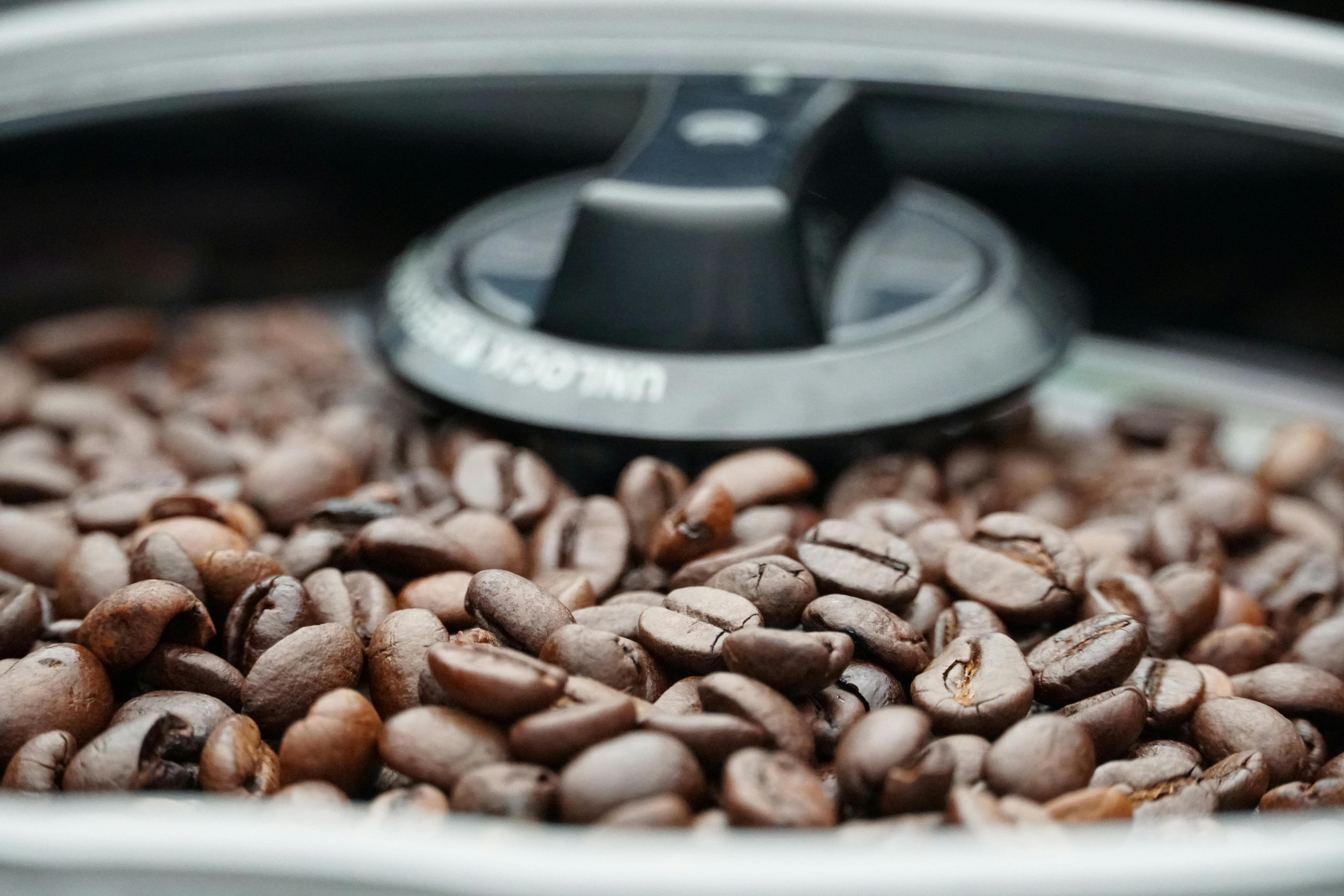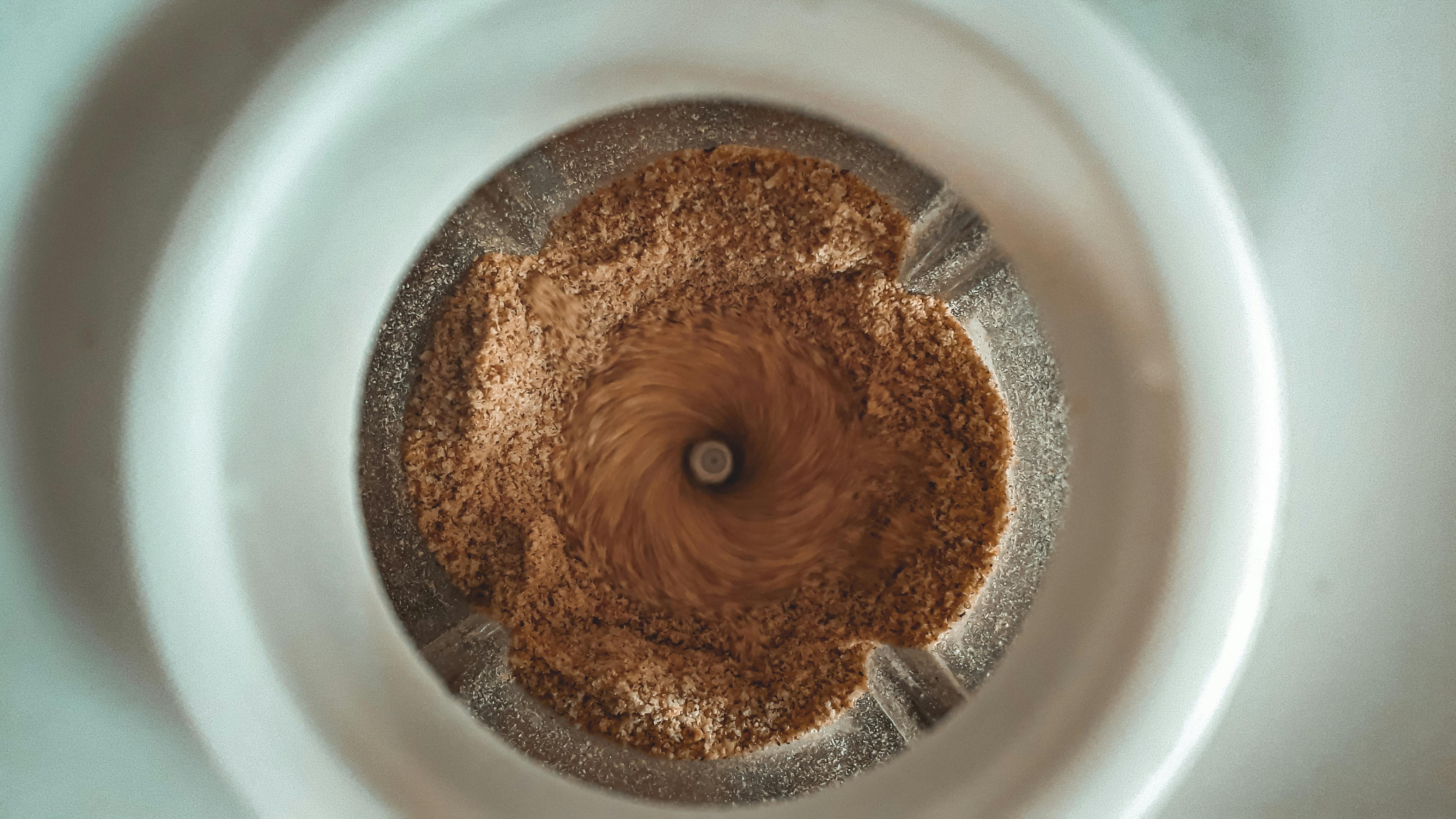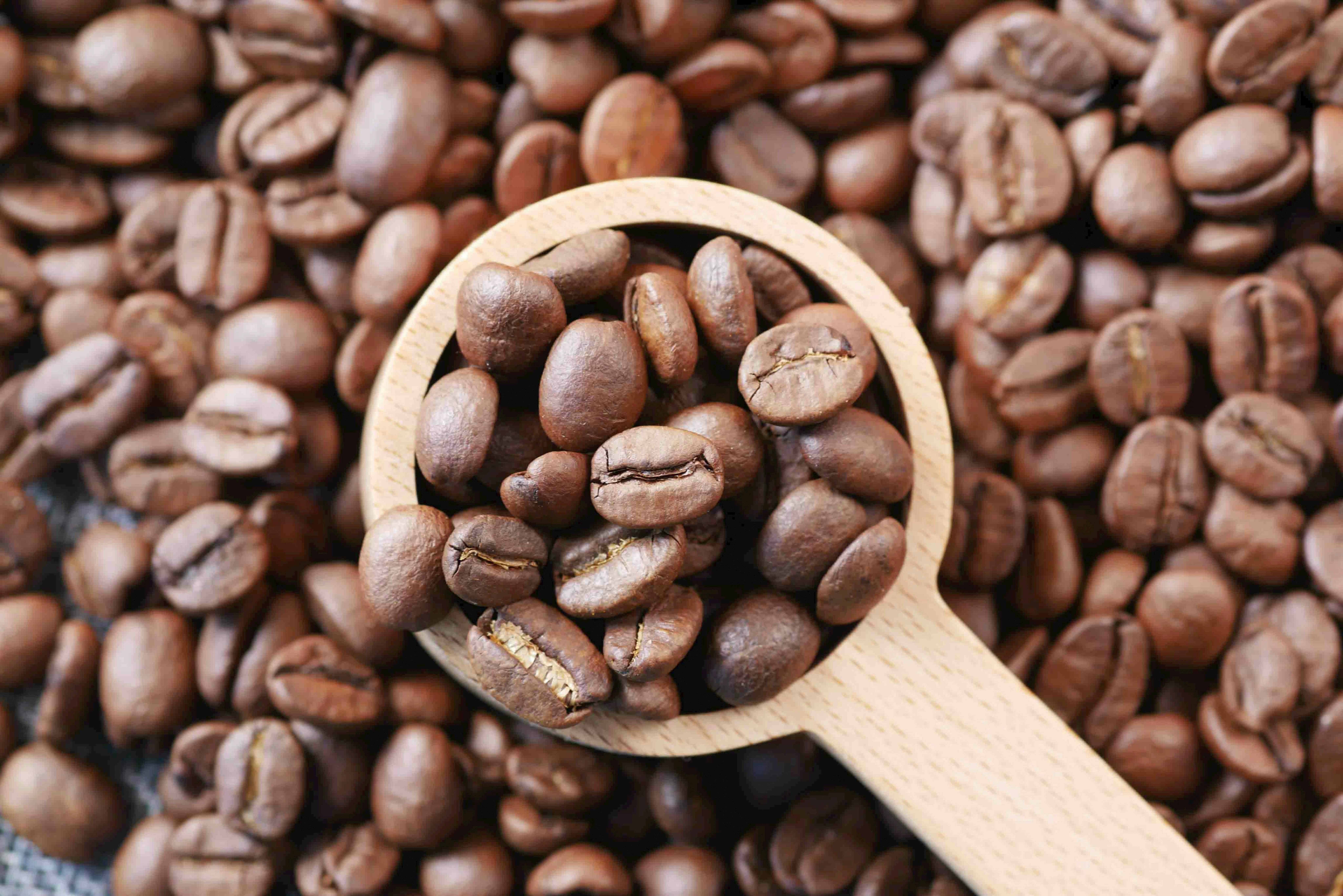You can't make great coffee without a great grinder. Think of it as the magic wand that turns simple coffee beans into the rich, fragrant grounds you need for a perfect cup. Imagine the difference between coarsely ground beans, which brew weak coffee, and finely ground beans, which create a strong, flavorful cup. This grinder? Prepare for a major shift. This alters everything. Seriously. A coffee grinder is super important because the best coffee starts with freshly ground beans—it's a simple fact. But with so many coffee grinders on the market, how do you choose the right one for your needs? From the grinder's type and its features to getting that perfect grind, this guide is your coffee companion. Better coffee is now within your reach. Simple as that.
Ready to begin? Here's the guide.
- Types of Coffee Grinders
- Features to Consider
- Manual vs. Electric Grinders
- Grind Size and Brewing Method
- Maintaining Your Coffee Grinder
- Top Coffee Grinders on the Market
- Tips for Using Your Coffee Grinder
- Common Coffee Grinder Mistakes
- The Impact of Grind Quality on Coffee Taste
- Conclusion
Types of Coffee Grinders
There are two main types of coffee grinders: blade grinders and burr grinders. The pluses and minuses of each brewing method change how the coffee tastes. Coffee lovers who want better brews need to grasp these distinctions.
Blade Grinders
Blade grinders operate much like a spice grinder or a small blender, using a spinning blade at the base to chop up coffee beans. Budget-friendly and compact, these are a great choice whether you're new to home grinding or just don't have a lot of room. Imagine how much easier your morning routine will be! However, the chopping action of blade grinders often results in an inconsistent particle size, with a mix of fine dust and larger chunks.

This lack of uniformity in ground coffee can lead to uneven extraction during brewing. Smaller particles may over-extract, imparting bitter flavors, while larger ones under-extract, resulting in sour or weak coffee. While better than pre-ground coffee for freshness, blade grinders don't offer the precise control needed for many brewing methods, especially those sensitive to grind consistency like espresso or pour-over.
Burr Grinders
Burr grinders crush coffee beans between two abrasive surfaces, called burrs, to a uniform size. Blade grinders can't match this method for consistent, controlled grind sizes. There are two main types of burr grinders: flat burr grinders and conical burr grinders, each with its own characteristics.
Flat burr grinders feature two parallel, ring-shaped burrs that sit horizontally, one stationary and one rotating. Coffee beans are drawn between these flat burrs, crushed, and then exit around the perimeter. Grinders flat burrs are often praised for producing a very uniform grind particle distribution, which can be particularly beneficial for espresso grinding where precision is paramount. The trade-off for higher speeds is sometimes extra heat and noise.
Conical burr grinders, on the other hand, use a cone-shaped inner burr that rotates within a stationary outer ring burr. Beans are pulled downwards through the burrs by gravity and the auger-like action of the cone. Conical burrs generally operate at lower speeds than flat burrs, which means less heat buildup (preserving coffee bean aromatics) and often quieter operation. Many high-quality electric coffee grinder models, including the popular Baratza Virtuoso, feature conical burrs, often made of stainless steel or ceramic burrs for durability and consistent performance.
Whether flat or conical, a good burr grinder is a significant step up for coffee quality. The ability to adjust grind settings precisely allows coffee people to dial in the perfect grind for their chosen brewing method. Many grinders deliver excellent results, but conical burrs are often favored for home use due to their balance of performance, noise, and heat management, providing consistent time after time results for your coffee.
Important details to check out.
The quality of your ground coffee and how easy the grinder is to use both depend on certain features. Your coffee brewing method will help you decide which grinder is best. Match the grinder to your style! Upgrading your grinder improves your daily cup.
Grind Settings

The number and range of grind settings are critical. Precise coffee brewing depends on the grind size. Lots of grind settings let you fine-tune that size for the perfect cup. Some grinders offer stepped adjustments, with predefined clicks between settings, while others provide stepless adjustments, allowing for infinite points in between. For those who enjoy a wide range of coffee preparations, from French press to espresso, a grinder with at least 40 distinct settings, or fine-tuned stepless adjustments, offers maximum versatility. Get the perfect cup every time! The grinder lets you change the grind size to suit your coffee beans, your brewing method (pour over, drip, French press, etc.), and how strong you like your coffee.
Capacity
Consider how much coffee you typically brew at one time. The capacity of a coffee grinder refers to both the hopper (where whole beans are stored) and the grounds container. A larger capacity is convenient for families, offices, or those who entertain frequently, while a smaller capacity, often found in manual grinders or compact electric grinders, works well for individuals or those who prefer to grind beans fresh for each serving. Some espresso fans prefer single-dosing, where only the beans ground for the immediate shot are added to the grinder, minimizing stale coffee.
Speed and Motor Quality
Faster isn't always better when it comes to grinding speed. Fast grinders create extra heat and static electricity. This can hurt the taste of your coffee and make a big mess with coffee grounds sticking everywhere. Look for grinders with lower RPMs (revolutions per minute) or those that incorporate gear reduction systems to slow down the burrs while maintaining adequate grinding power. Lighter roasts are harder to grind, but a powerful motor in your electric grinder makes all the difference. A quality motor means a longer-lasting appliance.
Noise Level
If you're an early riser or live in close quarters, a quieter grinder might be a significant priority. Conical burr grinders tend to be less noisy than flat burr grinders, and both are generally quieter than high-speed blade grinders. Some premium electric grinders incorporate noise-dampening features, but checking reviews for real-world noise levels can be beneficial. The sound of freshly grinding coffee beans can be pleasant, but an overly loud machine can be disruptive.
Build Quality and Materials
The materials used in a grinder's construction affect its durability, stability, and even grind quality. Grinders with metal bodies and high-quality stainless steel or ceramic burrs are generally more robust and provide better long-term performance. For instance, steel conical burrs are known for their sharpness and longevity. The sturdy construction cuts down on vibrations, so you get more even grinds without all the noise. Investing in a grinder with solid construction is a good reason to expect years of reliable service.
Ease of Cleaning and Maintenance
Coffee grinders accumulate oils and fine particles over time, which can become rancid and negatively affect your coffee taste. A grinder that is easy to disassemble and clean will make regular maintenance less of a chore. Look for features like easily removable burrs and hoppers. Some grinders even come with cleaning brushes. To get the best flavor from your coffee, keep your burr grinder clean. Clogged grinders ruin the taste.
Dosing Options
Many electric grinders offer different ways to dispense ground coffee. Some have simple on/off switches, while others feature timed grinding, allowing you to set a specific duration for consistent amounts. More advanced models, particularly espresso grinders, may offer grinding by weight or have programmable dose settings. This precisely measures the beans for each brewing cycle, giving you consistent brew times every time.
Size and Counter Space
Consider the physical footprint of the grinder, especially if you have limited counter space. While commercial grinders used in coffee shops are often large and robust, many home models, like the compact Eureka Mignon series, are designed to be more kitchen-friendly. Manual grinders, of course, offer the most flexibility in terms of storage and space.
Manual vs. Electric Grinders
The choice between a manual grinder and an electric grinder often comes down to convenience, budget, portability, and the desired level of engagement in the coffee-making process. Both types can produce excellent ground coffee when chosen carefully. Coffee experiences vary widely.
Manual Grinder
Manual coffee grinders, or grinders hand-operated, are appealing for several reasons. They are highly portable, require no electricity, and are generally quieter than their electric counterparts. Love hands-on coffee? Perfect for camping, these also work well while traveling, or even just for a more hands-on coffee experience at home. Many high-quality manual grinders feature excellent burr sets (often ceramic burrs or stainless steel conical burrs) that can produce a remarkably consistent grind, sometimes rivaling more expensive electric models, especially for single-dose grinding. Good burr grinders don't have to break the bank; they're an accessible way for specialty coffee fans to upgrade their brewing game.

However, manual grinding requires more physical effort and time, especially for larger quantities or finer grinds suitable for an espresso machine. Grinding enough coffee beans for a full pot of French press can be a workout. Despite this, the precise control and the quiet, contemplative process are valued by many.
Power grinders that run on electricity.
For quick and easy grinding, especially when making multiple pots of coffee or espresso, an electric grinder is a lifesaver. Home use is a breeze with these speedy machines. An electric coffee grinder automates the grinding process at the push of a button. Electric burr grinders, such as the Baratza Virtuoso or various Eureka Mignon models, provide consistent grinds across a wide range of settings suitable for virtually any brewing method. Big hoppers and bins make these electric coffee makers a breeze for brewing lots of coffee at once. You need even-sized particles for the best extraction. Lots of grinders can do this.
The primary downsides are usually a higher price point compared to manual grinders of similar burr quality, the need for electricity, and generally a larger footprint on your counter space. Some electric grinders can also be quite noisy. However, for sheer convenience and the ability to quickly produce uniform coffee grounds for any coffee maker, an electric grinder is often the preferred choice for most home brewers and is indispensable for serious espresso fans who need fine, consistent espresso grinding.
Grind Size and Brewing Method
The success of any coffee brewing method hinges significantly on using the correct grind size. Different brewing methods extract coffee solubles at different rates, primarily influenced by the contact time between water and coffee grounds, as well as the pressure used. A good quality grinder that allows you to adjust grind settings accurately is crucial for achieving the best coffee taste from your coffee beans.
Here's a table outlining common brewing methods and their generally recommended grind sizes. Remember that these are starting points; you'll likely need to fine-tune your grind setting based on your specific equipment, beans, and taste preferences. Perfecting your specialty coffee? Experiment!
| Grind Size | Description | Common Brewing Methods |
|---|---|---|
| Extra Fine | Powder-like, similar to flour. | Turkish Coffee |
| Fine | Smoother than table salt, but still gritty. | Espresso (for espresso machine), some Moka Pots (depending on the model) |
| Medium-Fine | Slightly finer than granulated sugar. | Cone-shaped Pour Over (e.g., Hario V60), Aeropress (shorter brew times), Siphon Brewers |
| Medium | Consistency of coarse sand or granulated sugar. | Flat Bottom Drip Coffee Makers, Chemex (some prefer slightly coarser), Aeropress (longer brew times), Siphon Brewers (some prefer finer) |
| Medium-Coarse | Like coarse or rough sand. | Chemex, Clever Dripper, Cafe Solo Brewer |
| Coarse | Similar to sea salt or breadcrumbs. | French Press, Percolators, Coffee Cupping |
| Extra Coarse | Very chunky, like peppercorns. | Cold Brew Coffee, Cowboy Coffee |
A good grinder should be able to handle this wide range of sizes consistently, producing uniform coffee grounds. If particles are too fine for your chosen method, you risk over-extraction, leading to bitter and harsh flavors. If they are too coarse, under-extraction occurs, resulting in a sour, weak, or watery coffee. Espresso is super sensitive to grind size. Small changes in grind can mean a big difference in the quality of your espresso shot. Precise control is what sets a top-notch grinder apart.
Maintaining Your Coffee Grinder
Regular maintenance is essential to keep your coffee grinder working optimally and to ensure your coffee always tastes its best. Over time, coffee oils and fine particles build up on the burrs and in the grinding chamber. This residue can become rancid, imparting off-flavors to your fresh coffee ground and can also hinder the grinder's performance, affecting grind consistency.
Here are some tips for maintaining your coffee grinder:
- Clean your grinder regularly. For daily or frequent users, a light cleaning every week or two is advisable. Use a stiff brush to remove loose coffee residue and chaff from the hopper, burrs, and grounds chute.
- For a deeper cleaning, especially for burr grinders, consider using specialized grinder cleaning tablets (like Grindz) or even plain, uncooked white rice (though check your grinder's manual, as some manufacturers advise against rice). Stubborn grime? These products lift it right off, and they're great at absorbing excess oil too. Run them through the grinder like coffee beans, then follow with a small amount of actual beans to remove any cleaner residue.
- If you have a burr grinder, disassembling it occasionally (e.g., monthly, depending on use) for a thorough clean can be very beneficial. Carefully remove the accessible burr (usually the upper one) and use a brush and a vacuum cleaner with a nozzle attachment to clean the burrs themselves and the grinding chamber. Avoid using water on steel burrs unless specified by the manufacturer, as it can lead to rust; ceramic burrs are more forgiving.
- Keep your grinder dry. Moisture can lead to mold growth and can cause coffee grounds to clump, clogging the grinder mechanism.
- Always empty the hopper if you don't plan to use the grinder for a few days. Storing coffee beans in the hopper for extended periods exposes them to air, light, and temperature fluctuations, leading to stale beans and, consequently, less flavorful coffee.
Proper maintenance not only prolongs the life of your grinder but also ensures that every batch of beans ground contributes to a delicious cup. This keeps your coffee grinder's burrs in good shape, so you get evenly ground coffee every time.
Top Coffee Grinders on the Market
While personal preference and budget play a significant role in choosing a coffee grinder, some models consistently receive high praise from coffee enthusiasts and professionals alike. Grind quality is excellent; these grinders are built to last and offer many useful features. These are excellent. Here are a few highly-rated options spanning different categories and price points:
Best Overall: The Baratza Virtuoso Plus is a great grinder.
From espresso to cold brew, the Baratza Virtuoso+ conical burr grinder delivers incredibly consistent grinds, no matter the setting. It features 40 stepped grind settings, high-quality steel conical burrs (specifically, the M2 burr set), and a digital timer for precise, repeatable dosing. Specialty coffee drinkers and baristas love it at home; it's reliable, performs well, and is built to last. Baratza is a solid long-term investment; their customer service is excellent, and parts are easy to find.
Best Budget Burr Grinder: OXO Brew Conical Burr Grinder

For those seeking excellent value, the OXO Brew Conical Burr Grinder offers a good burr set and consistent performance at a more accessible price point. It features durable stainless steel conical burrs, 15 main grind settings with micro-settings in between, and a simple one-touch start timer that retains your last setting. It's a step up from blade grinders, offering better grinding for various brewing methods, although it may not be as fancy as the top-of-the-line models.
Best Manual Grinder: Hario Skerton Pro
For coffee people who prefer the control and portability of hand grinding, the Hario Skerton Pro is a popular choice. It features ceramic conical burrs for a consistent grind, an improved burr shaft stabilizer for greater uniformity compared to older Hario models, and a comfortable grip for easier grinding. Its glass grounds catcher has a capacity suitable for brewing several cups, making it great for travel, small kitchens, or those who enjoy the ritual of manual coffee preparation. It's a reliable grinders hand option that doesn't break the bank.
Best for Home Espresso: Eureka Mignon Series
The Eureka Mignon series, including models like the Specialita, Silenzio, and Notte, are highly regarded espresso grinders, particularly for home espresso fans. These Italian-made grinders feature flat burrs (sizes vary by model), stepless micrometric adjustment for dialing in the perfect espresso grinding, and robust motors. Many models boast sound insulation for quieter operation and some offer timed dosing. Serious home baristas love Eureka Mignon grinders. They produce the perfectly fluffy grounds essential for amazing espresso, and they're built to last. While they are an investment, their performance for espresso is hard to beat in their class.
Another Excellent All-Rounder: I love my Breville Smart Grinder Pro; it makes amazing coffee.
Looking for precise grinding? The Breville Smart Grinder Pro delivers. Its 60 settings and adjustable burr give you incredible control over your coffee's texture. The durable stainless steel construction is a bonus. It features an LCD display, programmable shot or cup volumes, and comes with portafilter cradles for direct grinding. From French press to espresso, this electric coffee grinder handles it all. People who are adventurous with their coffee often choose this.
Choosing the right grinder often involves balancing your budget with your brewing habits and desire for quality. Investing in a good burr grinder, whether manual or electric, is one of the most impactful upgrades you can make to your coffee setup. Get the most flavor from your coffee beans with this grinder. It's that simple.
Using your coffee grinder effectively is easier than you think; here are some helpful hints.
Make delicious coffee consistently? Follow these easy steps for your coffee grinder. Want consistently great coffee? Focus on bean freshness, grind size precision, and a repeatable brewing process. That'll help! Taking the time coffee preparation seriously starts with good grinding habits.

- Grind your coffee beans just before brewing. Whole beans retain their aromatic compounds and freshness much longer than ground coffee. Grinding immediately before you brew ensures maximum flavor and aroma in your cup.
- Start with a medium grind setting if you're unsure, then adjust based on taste. If your coffee tastes bitter, your grind might be too fine (over-extraction); if it's sour or weak, it might be too coarse (under-extraction). This process of "dialing in" your grind is crucial for any coffee maker.
- Be consistent with your measurements for repeatable results. Use a scale for measuring beans accurately before grinding. Using the same amount of beans each time, and grinding them consistently, makes your coffee taste better and more predictable.
- Experiment with different grind sizes for your specific coffee beans and brewing method. Different beans (origin, roast level, age) may require slight adjustments to the grind setting to achieve optimal extraction and highlight their unique flavor profiles. Don't be afraid to adjust grind settings by small increments.
- Clean your grinder regularly, as mentioned before. Old coffee oils and fines can turn rancid and negatively impact the flavor of subsequent brews. A clean grinder ensures that the true coffee taste of your fresh beans shines through.
- Understand that burrs wear down over time. For most home users, burrs (especially steel conical burrs or ceramic burrs) will last for many years, but very heavy use or grinding very light roasts consistently might accelerate wear. If you notice a decline in grind consistency or an increase in fines, it might be time to consider replacing the burrs, if your model allows.
- Listen to your grinder. Unusual noises could indicate a foreign object (like a small stone that sometimes accompanies green beans) or an issue with the motor or burrs. Stop grinding immediately if you hear something amiss.
Let's talk about those common coffee grinder errors.
Keep your coffee grinder in tip-top shape and improve your brew by skipping these common errors. Many of these mistakes are easily preventable with a little awareness. Ensuring you get the best from your grinder means understanding what not to do.
- Grinding too much coffee at once and storing it. While better than store-bought pre-ground, ground coffee still loses its aromatic compounds much faster than whole beans. Grind only what you need for your immediate brew or, at most, for the day.
- Using the wrong grind size for your brewing method consistently. This is perhaps the most common mistake. Refer to grind size charts (like the one above) as a starting point and then fine-tune for your specific coffee maker and taste.
- Neglecting to clean your grinder regularly. As detailed earlier, oil buildup and stale grounds can ruin the taste of fresh coffee. A dirty grinder can also lead to inconsistent particle size as chutes and burrs get clogged.
- Storing coffee beans in the grinder's hopper for extended periods (days or weeks). Hoppers are not typically airtight, exposing beans to oxygen and light, which degrades their freshness. It's better to store beans in an airtight container and fill the hopper with just enough for a day or two, or single dose your beans ground fresh each time.
- Changing the grind setting while the grinder is running with beans in the burrs, especially when going finer. Overworking the motor and burrs can cause damage. It is advisable to adjust grind settings when the grinder is empty or running without beans, or as per your manufacturer's instructions.
- Using oily, flavored, or very dark roasted beans in grinders not designed for them. Extremely oily beans can coat the burrs and clog the grinder more quickly. Flavored beans can leave residues that are hard to clean and can taint future grinds.
- Not considering static. Static electricity can cause coffee grounds to cling to the grinder and make a mess. Some grinders are designed to minimize static, but a couple of drops of water stirred into the beans before grinding (Ross Droplet Technique) can help reduce it, though use this technique cautiously and ensure it's suitable for your grinder.
Skip those common mistakes, and your coffee grinder will help you get the most amazing flavor from your beans.
The Impact of Grind Quality on Coffee Taste
The quality of your coffee grind, specifically its consistency and appropriateness for your brewing method, profoundly affects the final coffee taste. An inconsistent grind, with a mix of very fine particles (fines) and very coarse particles (boulders), leads to uneven extraction. During brewing, the fines will over-extract quickly, releasing bitter compounds, while the boulders will under-extract, contributing sour or weak, undeveloped flavors. The coffee tastes unbalanced and muddy; the beans' flavor is completely lost.
A good quality grinder, especially a burr grinder, produces uniform coffee grounds. This uniformity allows for a more even extraction process, where water interacts with all coffee particles similarly, dissolving the desirable flavor compounds at a consistent rate. This makes for a clear, well-rounded cup; the distinct tastes of various coffee beans and roasting methods really stand out. The difference a quality grinder makes is often described as night and day by coffee enthusiasts.
This is why many coffee experts and specialty coffee shops insist that a quality grinder is just as important, if not more so, than a high-end coffee maker or espresso machine. Your coffee quality is directly tied to the performance of your coffee burr. Even the best coffee beans and brewing equipment cannot compensate for a poor grind. Investing in a good burr grinder is investing directly in the flavor of your daily coffee. Fine-tune your brew; discover amazing flavors. Coffee's huge variety is at your fingertips.

Conclusion
Love coffee? Then you need a great grinder. Brewing amazing coffee simply isn't possible without one. It allows you to unlock the full potential of your chosen coffee beans, delivering a fresher, more aromatic, and vastly more flavorful cup every single time. Your coffee's flavor depends a lot on how you grind the beans. A quality grinder makes all the difference.
Whether you opt for the tactile experience of a manual grinder or the convenience of an electric coffee grinder, choosing a burr grinder over a blade grinder will make the most substantial difference to your grind consistency and, ultimately, your coffee quality. Understanding features like grind settings, burr type (conical burrs or flat burrs), and build quality will guide you to a machine that suits your needs and budget. Remember that factors like managing counter space and selecting a grinder that is easy to clean also contribute to a better overall experience.
So invest in a quality grinder, take the time to experiment with different grind settings for your various brewing methods like French press or your espresso machine, and maintain it well. Get ready for a coffee upgrade! The rich, complex tastes of freshly ground beans will take your enjoyment to a whole new level. The right coffee grinder truly helps you make the most of every bean.


